3 Detention Pond Problems and a New Solution
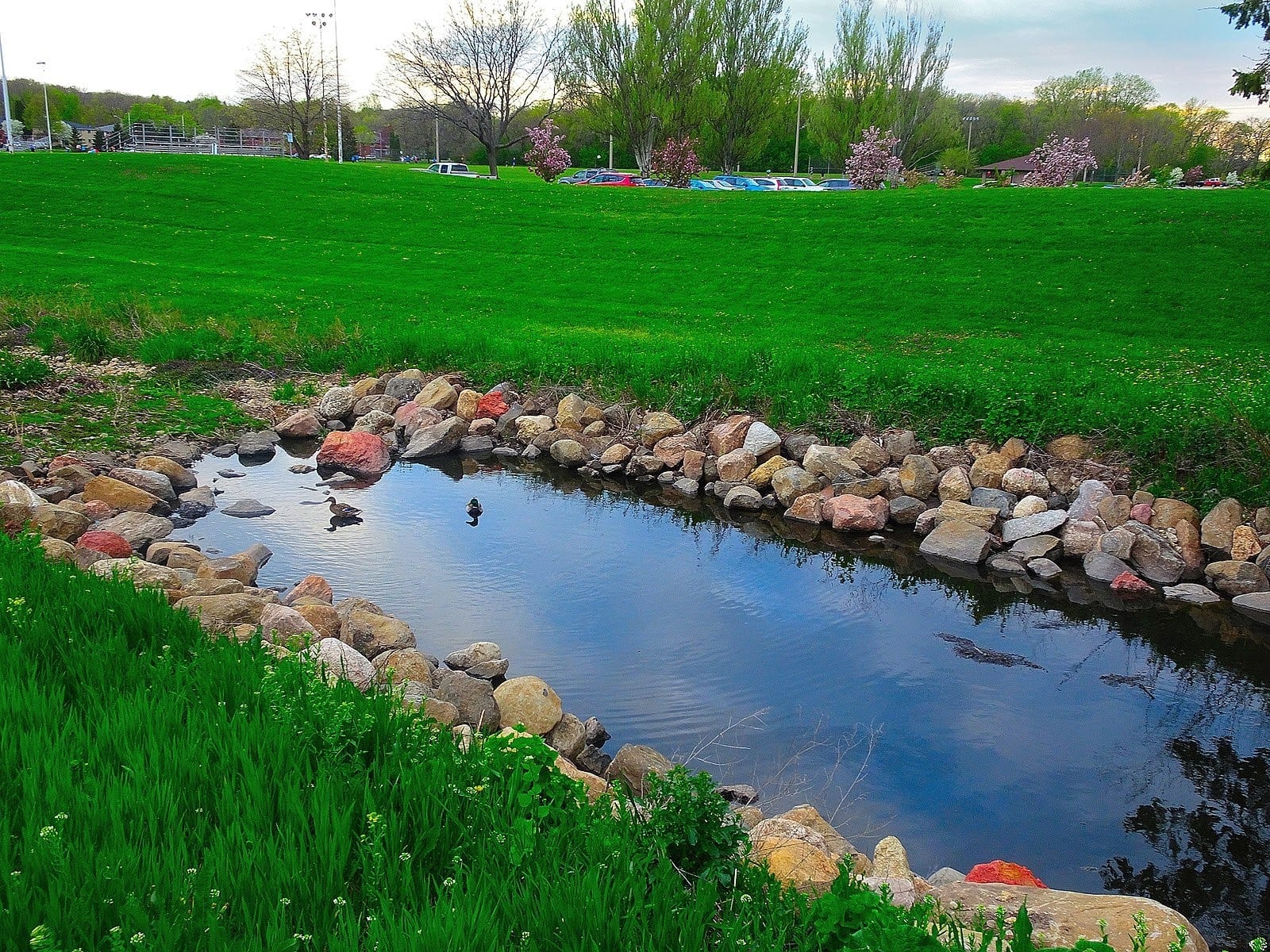
Detention ponds are artificially created ponds near parks, neighborhoods, housing developments, and other areas with a lot of impermeable pavement. They may look like regular ponds, but if you look a little bit closer, you can usually tell the difference between a retention pond and a regular pond.
Detention ponds, for instance, have steep sides and usually aren’t meant for swimming or recreational activity. These ponds serve as a collection and storage place for stormwater to drain into. They also release stormwater back into the sewer system at a normal rate, as opposed to flooding the sewers with water that would have normally sunk into the ground.
Common Detention Pond Problems
If you are looking for answers about detention pond problems, let’s take a look at 3 common issues with them, as well as an alternative, effective way to deal with stormwater management.
1. Putrification
A well-designed, regularly maintained detention pond should never become gross and putrid, as most detention ponds often do. Unfortunately, the people responsible for having detention ponds installed usually don’t have access to the kind of experts needed to keep them in top shape.
This leads to eventual contamination of the water from pollutants, as well as erosion of the shoreline, overgrowth of vegetation, a population boom in mosquitos, and potentially dangerous animals taking up residence in the detention pond.
In a worst-case scenario, local residents can end up having to foot the bill to get the detention pond upgraded or replaced. Without a team of professionals to regularly inspect, maintain, and repair a detention pond, the water can easily become polluted and foul-smelling. This leads to a smelly, greenish-brown pond that can easily flood into nearby areas
2. Pests
Most detention ponds start out fully functional and in perfect harmony with Mother Nature, lack of proper upkeep leads to the area becoming unkempt and overrun with pesky wildlife.
This is not only unsightly, it poses a health hazard to everyone nearby. Mosquitos bring disease, and deadly creatures like alligators love to prowl around detention ponds. Raccoons, snakes, lizards, territorial swans, and all manner of potentially dangerous creatures will begin populating an unkempt detention pond.
If there is no fence around the detention pond and vegetation isn’t regularly culled, you’re guaranteed to end up with a closer relationship with Mother Nature than you may have wanted.
3. Land Usage
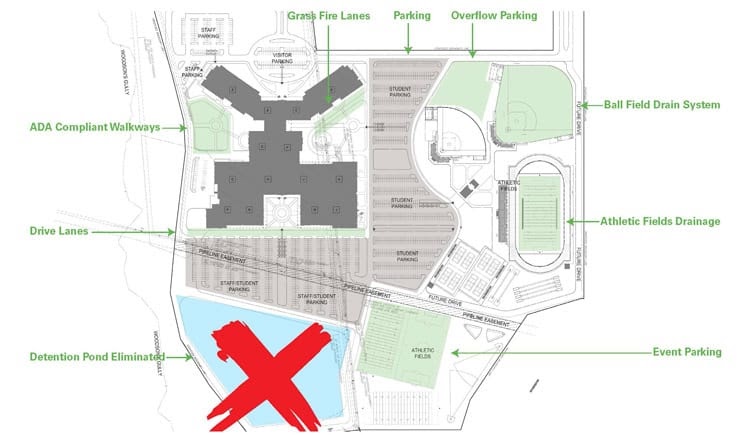
Detention ponds require quite a bit of open land to be effective. This is land that could have been used for additional parking, homes, or any other purpose. Not only does this land have to be sectioned off in most cases, but it’s also a running expense that requires regular maintenance.
You can either spend the massive upkeep costs to keep your pond in perfect working order, or you can let it slowly degrade into a marshy swamp that brings down the property value of everything around it.
Permeable Pavers Outperform Detention Ponds in Every Category
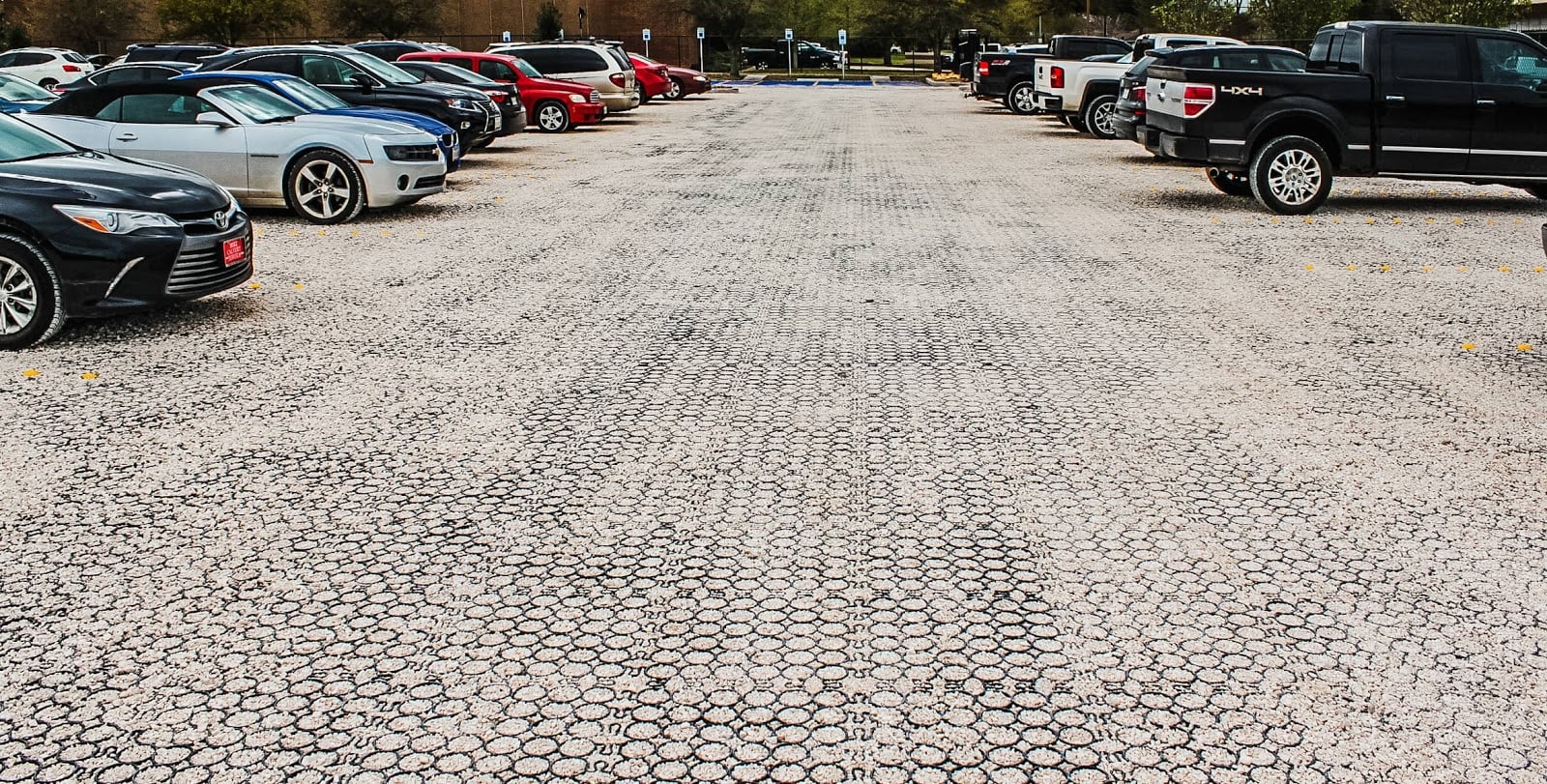
To manage your stormwater, installing permeable pavers throughout the area is a way to make better use of your land, save time on installation, and eliminate the outrageous maintenance expenses of a detention pond.
All of the common detention pond problems can be eliminated while still expertly managing local stormwater with permeable pavers. TRUEGRID pavers, for example, allow stormwater to pass right through them and into the ground below.
They are durable enough to handle high volumes of traffic and they won’t break down in any type of weather. They only require a shallow excavation and some aggregate fill to install, and they snap together instantly like LEGO® blocks.
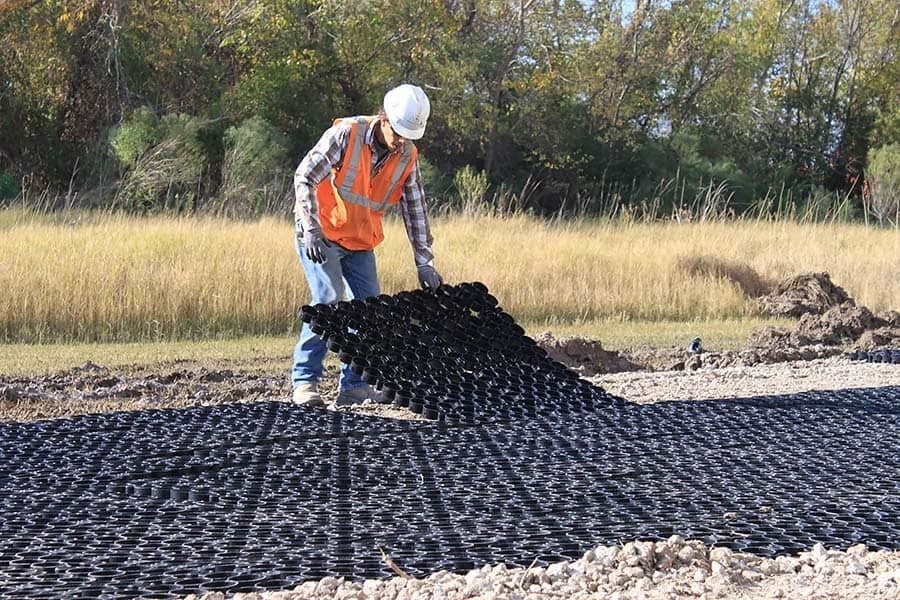
Whether you need to manage the stormwater for a park, parking lot, neighborhood, or housing development, installing TRUEGRID permeable pavers in place of regular asphalt or cement is the most efficient way to do it.
If you’d still like to keep some amount of asphalt and concrete, you can just install as many as required to manage stormwater. They look clean-cut and stylish, and you might prefer their look to other common paving materials.
One of the biggest detention pond problems is that they aren’t very eco-friendly. TRUEGRID permeable pavers, on the other hand, are made with 100% recycled plastic and only work in balance with nature. They allow stormwater to flow and filter naturally, as opposed to being collected and stored.
Eliminate the Need for a Detention Pond with Permeable Pavers
If you want to avoid having an overgrown and run-down detention pond that attracts dangerous predators and mosquitos, TRUEGRID permeable pavers are the answer. You’ll be able to use the extra land to your benefit, while preventing the maintenance costs and/or issues of a detention pond.
Contact a paving expert at TRUGRID today and discover how a new and effective drainage solution like permeable pavers can improve your project.
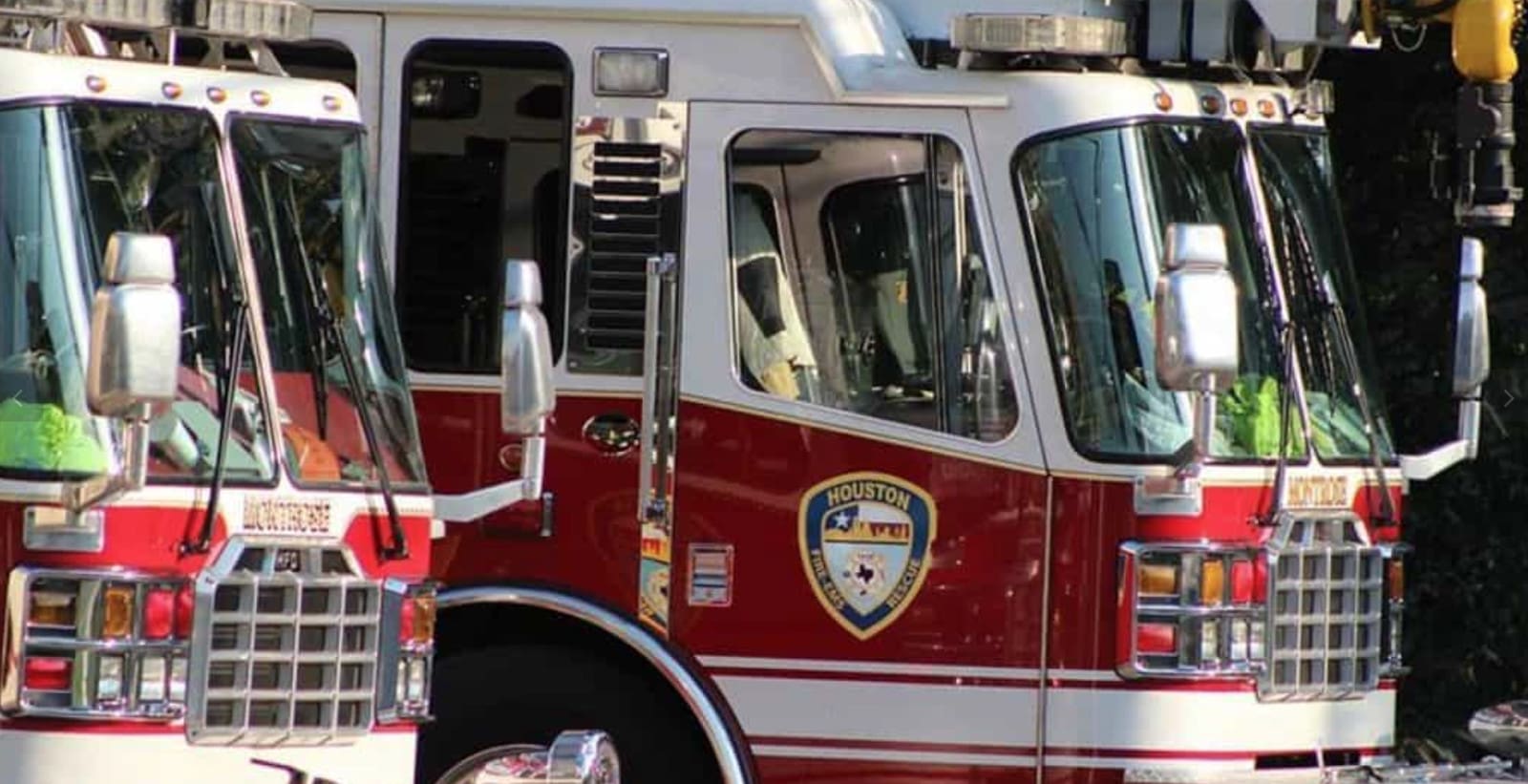
Fire lanes are essential for a wide variety of buildings, including most businesses. They are typically mandated by the state and required in certain areas, often out front or along the side of buildings, parks, and other areas. The lanes are only to be used by fire vehicles and they provide a place for them to park in an emergency. Other emergency vehicles may use them for expedited travel as well.
The main thing to take into account with fire lanes is that they are not for personal use and must be strong enough to handle fire engines if needed. So, while you need them to meet safety requirements, you should also look to save as much money as you can while building one. And perhaps add a little green space to your business. One way to do this is by installing a grass fire lane.
Grass fire lanes installed with the right materials will meet the local and state requirements and save you money as well. In case you want to know what your best option is, let’s take a look at a few reasons why you should consider building a grass fire lane.
1. It Looks Better
Grass fire lanes look better than asphalt or concrete fire lanes. If you don’t already have grass around your building, using your fire lane to incorporate some fresh green grass is the perfect way to get a stylistic boost while meeting local fire lane requirements as well.
2. It Costs Less to Install
Asphalt and concrete both come with hefty installation costs. They require a team of workers using a variety of equipment. The workers also have to wait for the material to dry before continuing to work. These increased job completion times result in you paying a higher price.
In addition, the material needed to build a grass fire lane is much less expensive than what it costs for asphalt or concrete. Plastic permeable pavers, like the type produced by TRUEGRID can be filled with gravel or another type of aggregate to create a durable and affordable grass fire lane that will require almost no maintenance throughout its lifetime.
3. It’s Permeable
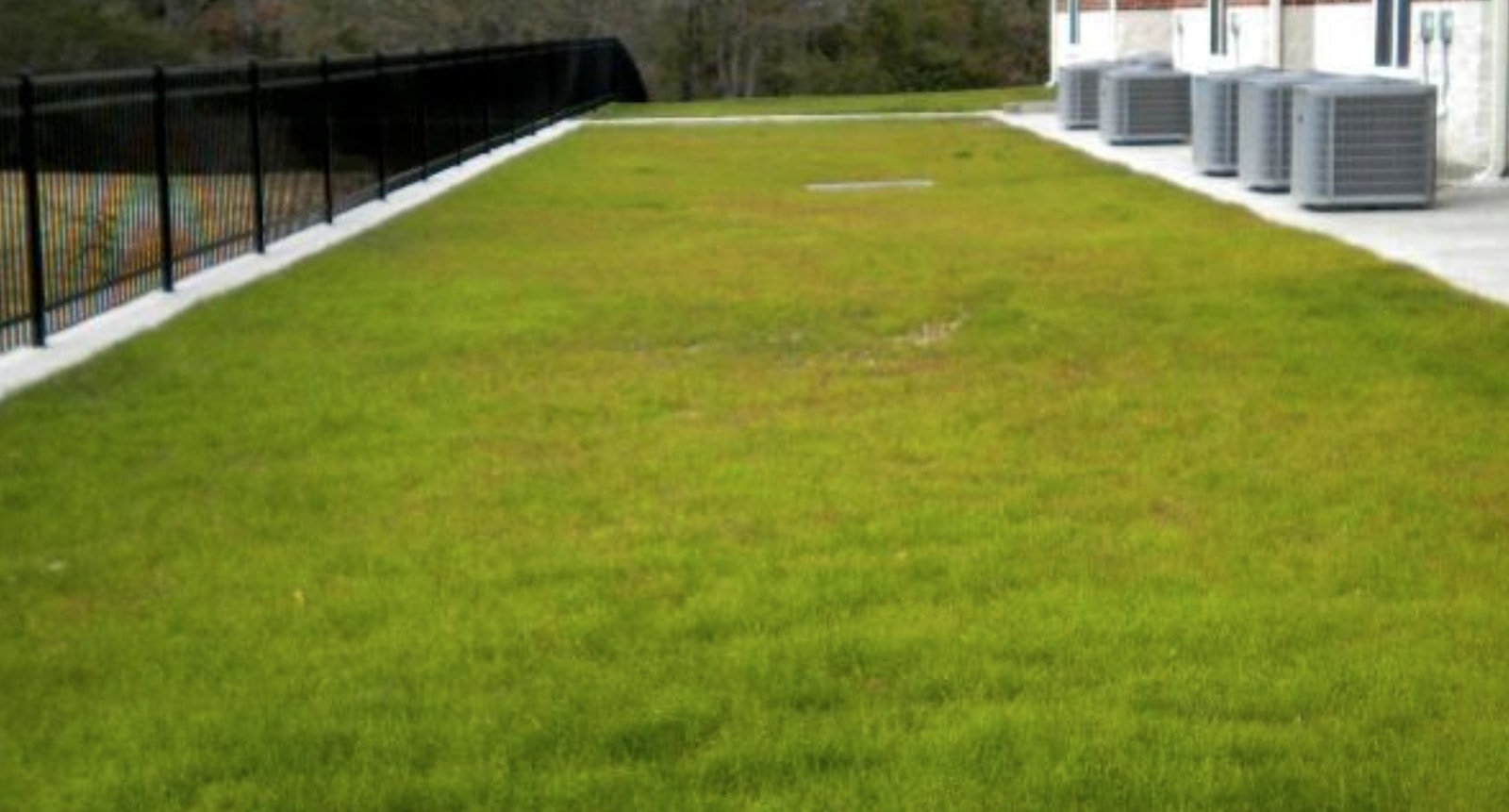
Grass fire lanes built with TRUEGRID permeable pavers are 100% permeable, allowing liquids to drain directly through them and into the soil where they can be naturally filtered. Compared to impermeable materials like asphalt and concrete, permeable pavers require no additional drainage systems or water detention ponds, which saves you money and helps protect the local environment.
4. It’s Eco-Friendly
Aside from allowing for the natural flow of water, grass fire lanes are also much more eco-friendly than a fire lane made with concrete or asphalt. TRUEGRID permeable pavers are made with 100% recycled plastic, which is one way to have a much more positive impact on the environment.
5. It’s Durable
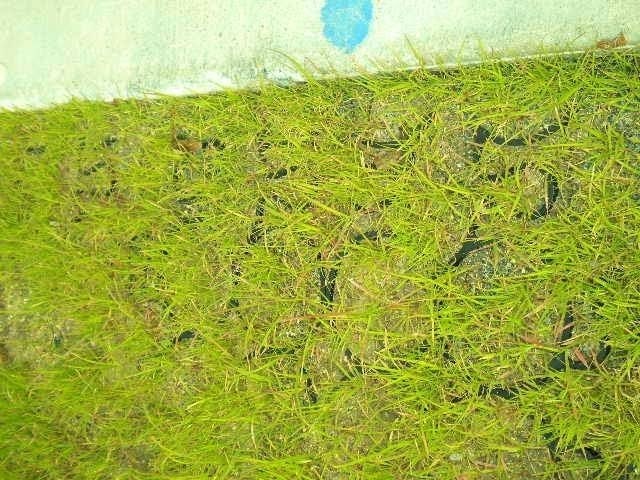
TRUEGRID permeable pavers are so durable that they can handle the entire weight of a monster truck jumping off a ramp and landing on them without breaking. They have been repeatedly tested and approved by fire marshalls across the country. With that kind of load capacity, it goes without saying that they can handle any fire truck or emergency vehicle.
Despite being much more affordable, TRUEGRID permeable pavers are more durable and require less maintenance asphalt and concrete. You are guaranteed to meet any load-bearing requirements your state may require when you use permeable pavers to build a grass fire lane.
A Fire Lane Made with Grass is the Superior Option
If you’re in charge of making sure a fire lane gets built, there are a few ways you can go about it. Most opt for expensive asphalt or concrete to build an impermeable fire lane that is costly to install, adds to impervious cover, and requires long-term maintenance.
If you want to save money while creating an aesthetically pleasing fire lane, and one that doesn’t count against your impervious cover restrictions, TRUEGRID permeable pavers are a great option. They are much more eco-friendly than concrete or asphalt, and they are just as durable and don’t require any drainage systems or heavy maintenance.
If you want a fire lane that looks great, can reliably handle the weight of any emergency vehicle, and costs you a fraction of what asphalt or concrete would, contact the paving experts at TRUEGRID permeable pavers for more information and a custom quote.
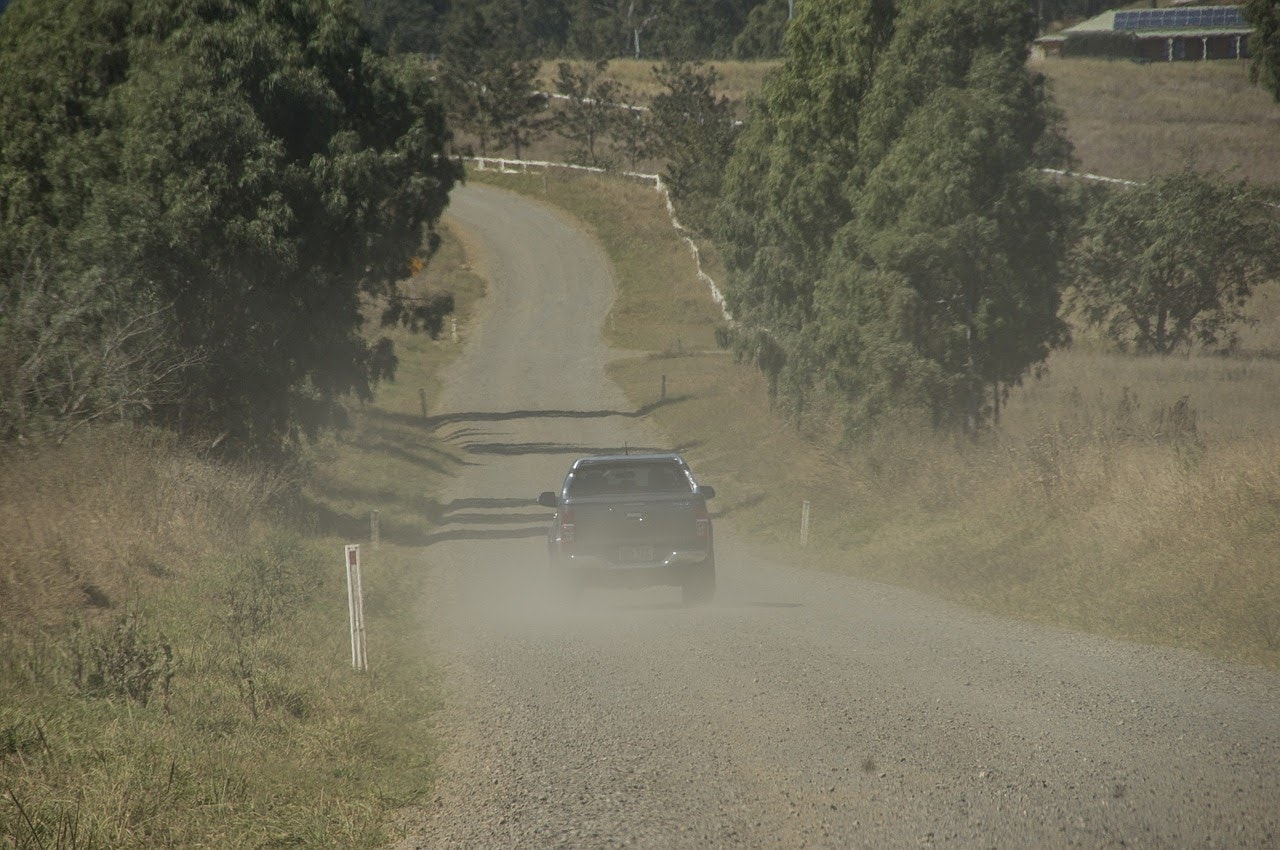
Dust on construction sites and large commercial lots can cause many different problems for everyone working in the area. Work sites often see a lot of dirt and pulverized gravel, and the amount of dust that kicks up into the air from heavy vehicles and foot traffic can become so great that it impairs vision and breathing, making the entire site a health hazard.
There are a variety of different methods to control dust, plain water being the most common. Dust palliatives, however, are also frequently used to combat dust in areas where it is really bad or where construction work is expected to last for an extended period of time.
Dust might be dangerous, but dust palliatives have their own set of dangers to be concerned about. In order to bring you up to speed on dust palliatives and why you should look to reduce their usage, let’s take a look at some common dust palliatives and how you can take measures to replace them on your commercial lot or construction site.
The Downsides of Chemical Dust Control
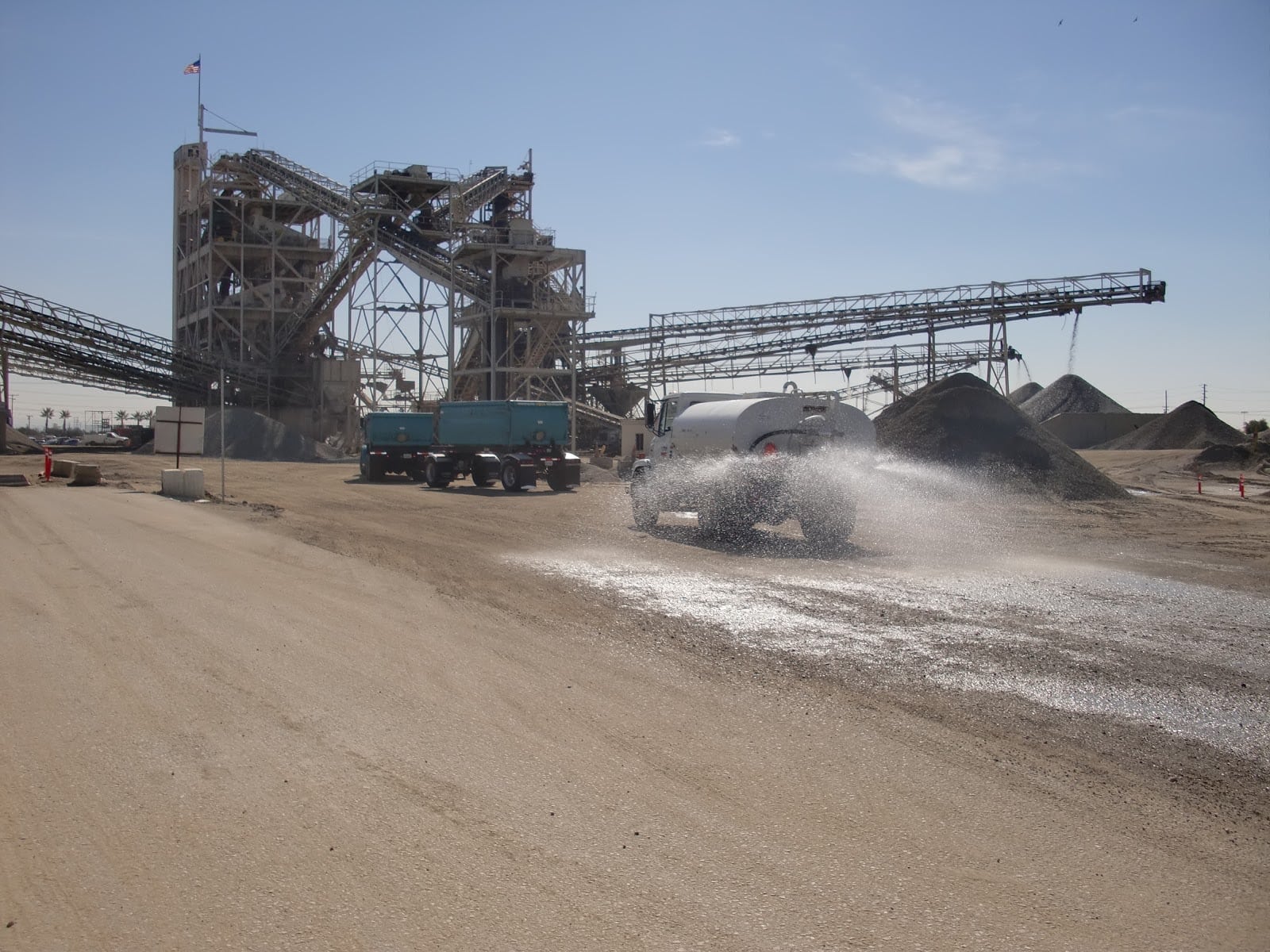
Dust palliatives aren’t just more expensive and time-consuming to apply than water or dust control alternatives, they are often harmful to the environment. Dust palliatives are often absorbed by nearby plants, which then are consumed by animals that are consumed by humans. They also frequently make their way into local water systems, lakes, and rivers.
Once the dust palliative begins to dry out and become less effective, the dust that it’s been applied to becomes even more dangerous once it starts getting into the air again, due to the chemicals.
Commonly Used Dust Control Agents
Lignins
Lignins are a commonly used dust palliative derived from plants and trees. The glue that keeps plants and trees together is also useful for making dust stick to itself and stay on the ground. Lignins are eco-friendly for the most part, but they can have additional harmful chemicals added to them that may not be desirable for plants, animals, or humans to ingest
Magnesium Chloride
Another commonly used dust palliative is magnesium chloride. This substance is a salt which is naturally biodegradable. It can work for controlling dust on a very short-term basis but it ultimately comes with the same downsides that all dust palliatives do. It’s not ideal for it to be permeating the soil or entering nearby water or being around living creatures. It can also be costly to continue applying it as needed over an extended time-frame.
A Superior Alternative to Chemical Dust Control
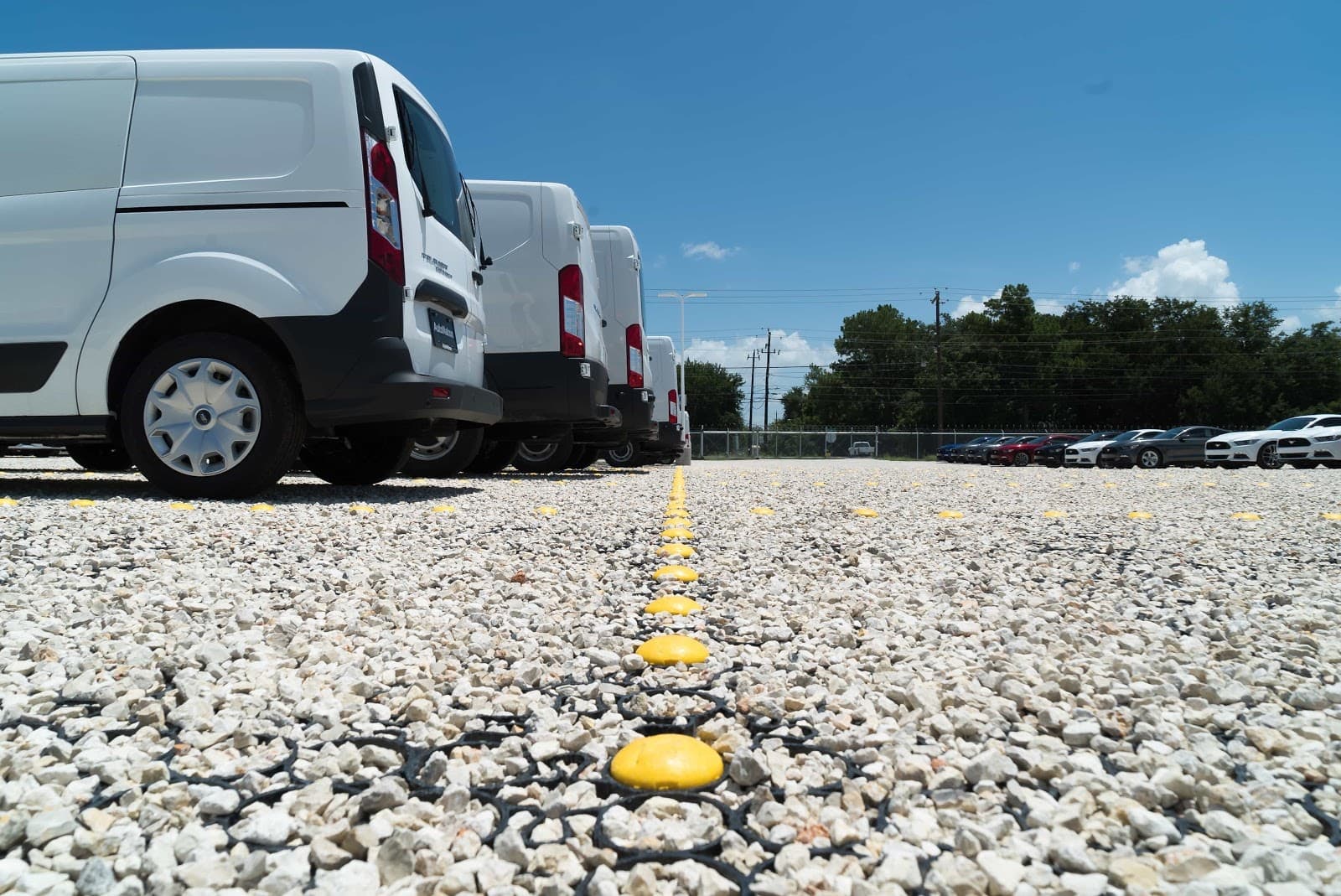
One method for controlling dust that doesn’t involve the use of chemical palliatives is to use permeable pavers. Plastic permeable pavement can be quickly snapped into place and filled with aggregate for a much more cost-effective and long-term dust control solution.
TRUEGRID permeable pavers are made from 100% recycled plastic and allow water to pass directly through them. They control dust by locking large pieces of aggregate such as gravel, into place, preventing it from becoming pulverized or ground into dust.
This solution can be implemented throughout an entire construction site in less than a day, and just as quickly disassembled if necessary. TRUEGRID permeable pavers are better at providing dust control, they don’t affect the environment negatively in any way, and they are more cost-effective than reapplying chemical agents.
It is less of a dust control method and more of a dust elimination method, effectively reducing the airborne dust on a site to an almost non-existent level. Construction site workers find it much less of a hassle to spend a handful of hours installing TRUEGRID pavers, than they do constantly having to reapply dust palliatives. There is almost no maintenance required once the pavers have been installed and they will continue preventing airborne dust as long as they are there.
Permeable Pavers are a “Set it and Forget it” Solution to Worksite Dust
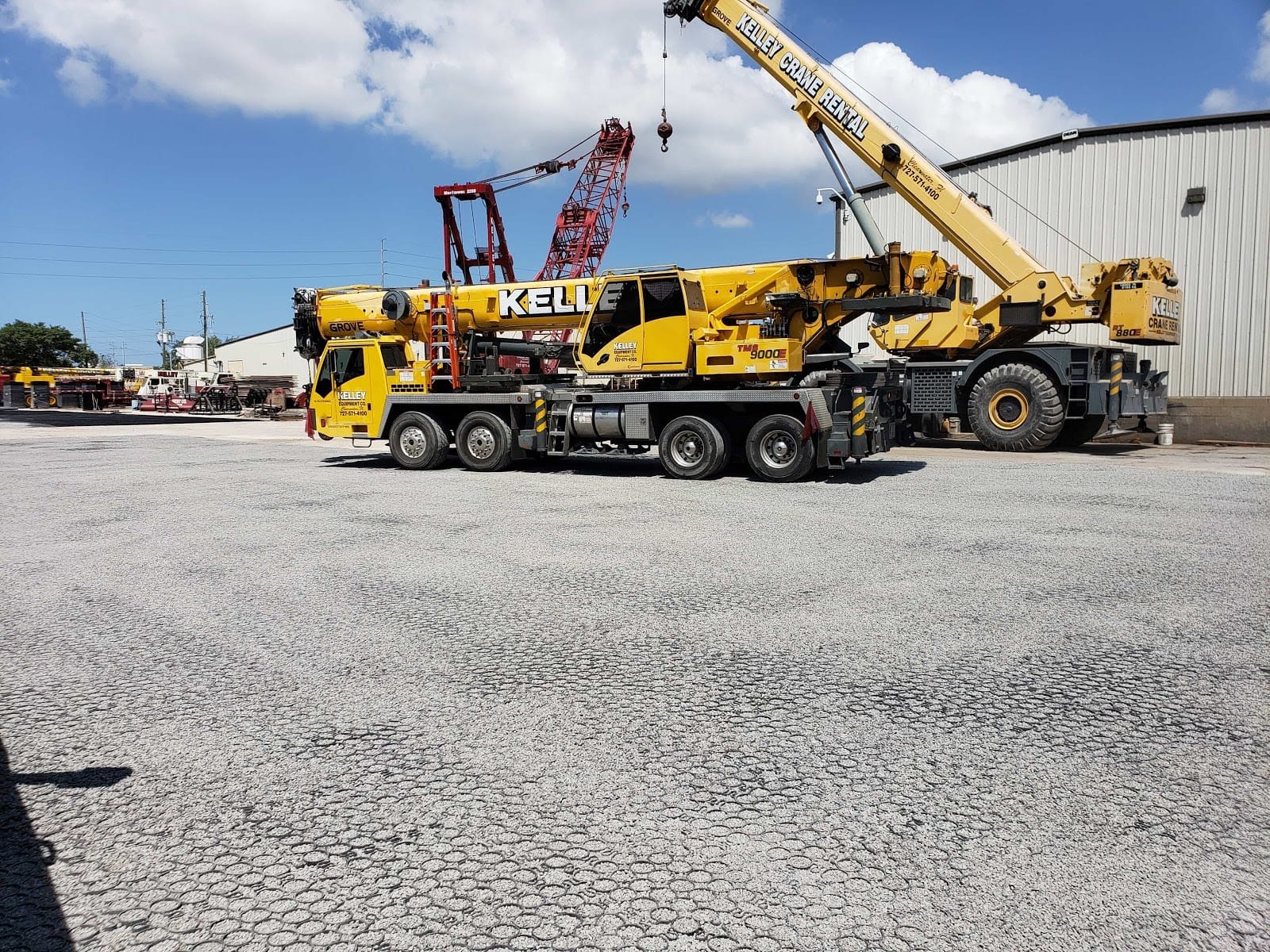
Instead of subjecting yourself or your employees with constantly reapplying potentially harmful dust palliatives to your entire worksite or commercial lot, consider switching to a more effective and eco-friendly solution. Permeable pavers, made in the U.S.A., by TRUEGRID are much more cost-effective and safe.
They allow for the natural flow of liquids directly through them where they can be filtered by the soil, as intended. They also provide a highly durable and stable surface to drive and walk on, able to handle even the heaviest vehicle with ease.
For a dust control method that only needs to be applied once and will nearly eliminate airborne dust without any maintenance required, permeable pavers from TRUEGRID are the best option. Contact a paving expert at TRUEGRID today for more information on how to set up your permeable paving lot.

